BY DEFENCE JOURNALIST SAHIL | T.I.N. NETWORK
Israel’s Forward Footprint in Syria Becomes “Strategic Lifeline”: Netanyahu’s High-Power Visit Signals Hardening Posture on Northern Front
IDF Buffer Zone, Syrian Border — In a rare and unmistakably symbolic gesture amid escalating regional tensions, Israeli Prime Minister Benjamin Netanyahu made a high-stakes visit to an Israel Defense Forces (IDF) outpost inside the Israeli-controlled buffer zone in Syria — a move that underscores Israel’s evolving strategic calculus in the northern sector and its determination to secure the Golan Heights frontier from what it describes as “immediate, unpredictable, and multi-front threats.”
Netanyahu’s visit, conducted with top political, military, and intelligence leadership standing shoulder to shoulder with frontline troops, reflects a message that Jerusalem wants no ambiguity about: Israel’s presence in this sensitive territory is not just tactical or temporary, but of “immense importance,” as the Prime Minister put it, directly linking the deployment to homeland security, regional alliances, and deterrence against hostile factions operating across the Syrian landscape.
A Visit That Signals a Strategic Shift
Unlike earlier routine inspections of forward posts, this visit carried the tone of a wartime review. Netanyahu’s words to the soldiers were loaded with intent — acknowledging the possibility of rapid escalation, highlighting the offensive dimension of the IDF mission, and stressing that Israel considers its presence in Syria a forward shield to blunt and neutralize threats long before they touch Israeli soil.
“We attach immense importance to our capability here — defensive and offensive,” Netanyahu said while addressing troops who have been rotating through the sector for years. “Safeguarding our Druze allies, and especially safeguarding Israel and its northern border opposite the Golan Heights… This is a mission that can develop at any moment, but we are counting on you.”
His reference to the Druze community — a minority group with strong historic, social, and security ties with Israel — was not mere rhetoric. Over the past several months, tensions involving Druze villages in southern Syria, Hezbollah-linked militias, and Syrian regime elements have pushed Israel to reinforce its oversight and rapid-response architecture across the buffer zone. Netanyahu’s message reaffirmed that Israel’s northern doctrine combines territorial defence with community protection and cross-border risk containment.
Troops on Sixth Deployment: Fatigue, Professionalism, and Determination
Netanyahu’s office (PMO), speaking exclusively to T.I.N Network, noted that the visit was designed primarily as a morale-boosting mission for troops who have endured repeated deployments in one of the most unpredictable theatres.
“They really appreciated the visit,” a senior PMO official said. “There are soldiers there on their sixth round. They said they want to continue, and they want to continue getting all the borders safe.”
This admission reflects both the human cost of prolonged conflict environments and the institutional prioritisation of the northern front. Many of the troops stationed at the border have experience in Lebanon, Gaza, and the West Bank, bringing multi-domain combat expertise to the anti-infiltration and counter-proxy operations carried out from the Golan sector.
The Prime Minister took time to speak with active-duty and reserve soldiers, hearing their concerns, addressing their operational questions, and acknowledging the tactical strain the sector demands. “He praised their actions during the war and their efforts to maintain security in the area,” the PMO added.
A Full-Spectrum Leadership Presence Underscoring the Stakes
The significance of the visit was amplified by the heavyweight delegation that accompanied Netanyahu. With Defense Minister Israel Katz, Foreign Minister Gideon Sa’ar, and IDF Chief of Staff Lt. Gen. Eyal Zamir by his side, the visit essentially turned into a forward-area national security council meeting — on the ground, in real time, facing Syria.
Shin Bet director David Zini’s presence highlighted domestic intelligence integration with frontline assessments, especially as Israel deals with heightened infiltration threats from Iran-backed militias that have expanded their footprint in southern Syria.
Also present were acting National Security Council chief Gil Reich, Israeli Ambassador to the US Yehiel Leiter, Northern Command head Maj. Gen. Rafi Milo, COGAT chief Maj. Gen. Ghassan Alian, and 210th Division Commander Brig. Gen. Yair Peli — the very architecture responsible for surveillance, operations, and civil-military coordination along the volatile border.
This rare combination of political, diplomatic, operational, and strategic leadership visiting a Syrian-frontline position sends a powerful message not only to Israeli troops but also to adversarial groups watching closely.
Why the Golan–Syria Sector Matters More Than Ever
Israel’s presence across the Golan frontier has long been shaped by Assad regime instability, Hezbollah activity, ISIS remnants, and Iran’s multi-layered proxy networks across Syria. But the past year has sharply elevated the urgency:
• Iran-aligned militias have been attempting to establish a new corridor from Damascus toward Quneitra, aiming to position offensive assets closer to Israel.
• Hezbollah’s southern Syrian cells have been testing the IDF’s surveillance grid with drone flights, sniper positions, and short-range missile teams.
• Syrian army unpredictability, driven by shifting alliances, has created pockets of permissive terrain for Iran-backed elements.
• Cross-border terror infiltration attempts have increased, with IDF intercepting reconnaissance squads on multiple occasions.
In this backdrop, Netanyahu’s reference to “defensive and offensive capability” is a calculated acknowledgment that the IDF is engaged in a layered strategy — detecting threats early, disrupting them across the border, and, when necessary, launching pre-emptive strikes in Syrian territory to prevent the formation of new militant infrastructure.
Internal and External Messaging
Netanyahu’s visit accomplishes two goals simultaneously.
1. Domestic confidence-building
At a time when the northern border remains tense — with residents of the Golan, Upper Galilee, and northern towns anxious about spillover — the visit reassures Israeli civilians that their government is physically examining the frontlines, not merely issuing statements from Jerusalem.
2. Regional deterrence
By bringing the top brass to a Syrian outpost, Israel is signalling to regional actors — especially Iran, Hezbollah, and Syrian factions — that its northern strategy is cohesive, active, and backed at the highest levels. The presence of the Israeli ambassador to the US also embeds a subtle diplomatic layer, linking operational posture with international engagement.
The Druze Dimension: Strategic and Social
Netanyahu made an unusual and deliberate reference to “safeguarding our Druze allies.” Over the decades, the Druze of the region have served in the IDF, supported Israeli communities, and provided critical intelligence about Syrian militant movements. With sectarian tensions in southern Syria rising, Israel is making clear that it will not allow Druze villages near the border to be targeted by pro-Iran militias or Syrian units aligned with hostile groups.
A Mission That May Escalate at Any Moment
When the Prime Minister warned that “this is a mission that can develop at any moment,” he was referencing recent intelligence assessments suggesting that:
• Iran-backed militias may attempt a coordinated escalation in Syria to relieve pressure from Lebanon.
• Newly deployed Hezbollah units may be preparing cross-border rocket harassment from deeper Syrian territory.
• ISIS remnants in the Yarmouk basin have shown signs of regrouping.
Thus, the outpost Netanyahu visited sits at the intersection of multiple threat vectors — making it one of the most critical forward positions in Israel’s northern theatre.
Conclusion: Israel Draws a Hard Line on the Northern Front
Netanyahu’s high-impact visit to the IDF buffer zone post marks a pivotal moment in Israel’s northern security doctrine. It reflects a leadership increasingly convinced that the Syrian front can no longer be treated as a secondary theatre but instead as a rapidly evolving arena where Iran-backed militias, Hezbollah infiltration units, and regional instability converge.
By projecting strength, solidarity with soldiers, and strategic clarity, Israel is telegraphing that its presence in Syria — far from being a modest deployment — is now foundational to its defence posture.
For Israel, the Golan Heights is no longer just a border; it is the first wall of defence in a widening regional battlefield.
BY DEFENCE JOURNALIST SAHIL | T.I.N. NETWORK
सीरिया में इज़राइल की मौजूदगी बनी “रणनीतिक जीवनरेखा”: उत्तरी मोर्चे पर बढ़ते संकटों के बीच नेतन्याहू का हाई-पावर दौरा
आईडीएफ बफर ज़ोन, सीरियाई सीमा — मध्य पूर्व में बढ़ती उथल-पुथल और बहु-फ्रंट सुरक्षा चुनौतियों के बीच इज़राइल के प्रधानमंत्री बेंजामिन नेतन्याहू ने मंगलवार को सीरिया के भीतर आईडीएफ-नियंत्रित बफर ज़ोन की एक संवेदनशील चौकी का दौरा किया — एक दौरा जिसने सिर्फ़ सैनिकों का मनोबल नहीं बढ़ाया, बल्कि यह संकेत भी दिया कि इज़राइल अब इस पूरे क्षेत्र को अपनी सुरक्षा की “पहली दीवार” मानकर लेकर चल रहा है।
नेतन्याहू के साथ इस दौरे में इज़राइल की सुरक्षा संरचना का पूरा शीर्ष नेतृत्व एक साथ मौजूद रहा — जो इस बात का साफ़ संदेश देता है कि उत्तरी मोर्चा अब किसी भी हाल में उपेक्षित क्षेत्र नहीं है, बल्कि इज़राइल की राष्ट्रीय सुरक्षा रणनीति का केंद्र बन चुका है।
पीएम के शब्दों में, सीरिया में इज़राइल की उपस्थिति “immense importance” — यानी अत्यंत निर्णायक महत्व — रखती है। यह सिर्फ़ सीमाओं की रक्षा नहीं, बल्कि संभावित हमलों को दूर से ही रोकने, ईरान-समर्थित मिलिशियाओं को दबाव में रखने और गोलान हाइट्स के सामने बसे इज़राइली कस्बों को सुरक्षित रखने का सबसे प्रभावी तरीका है।
युद्ध-स्तरीय समीक्षा जैसी गंभीरता: नेतन्याहू का संदेश बदलती रणनीति का संकेत
नेतन्याहू की सेना को दी गई ब्रीफिंग स्पष्ट रूप से युद्ध-पूर्व तैयारियों जैसी थी। उनकी आवाज़ में चेतावनी भी थी और भरोसा भी — कि मिशन किसी भी समय तेज़ हो सकता है, पर नेतृत्व को भरोसा है कि आईडीएफ इसे संभाल लेगी।
उन्होंने कहा—
“हमारी यहाँ की क्षमता — रक्षात्मक भी और आक्रामक भी — अत्यंत महत्वपूर्ण है। हम अपने ड्रूज़ सहयोगियों की सुरक्षा के लिए प्रतिबद्ध हैं और उससे भी अधिक, गोलान हाइट्स के सामने हमारे उत्तरी क्षेत्रों को सुरक्षित रखना हमारी प्राथमिक जिम्मेदारी है। यह मिशन किसी भी पल बदल सकता है, लेकिन हमें आप पर पूर्ण भरोसा है।”
ड्रूज़ समुदाय का ज़िक्र कोई सामान्य राजनीतिक बयान नहीं था। पिछले महीनों में दक्षिणी सीरिया के ड्रूज़ इलाकों में ईरानी-समर्थित लड़ाकों और हिज़्बुल्लाह की गतिविधियों में वृद्धि हुई है। यह वह बिंदु है जहां इज़राइल खुद को न सिर्फ़ अपनी सीमाओं का रक्षक मानता है, बल्कि क्षेत्रीय स्थिरता का भी एक मौन प्रहरी मानता है।
छठे टूर पर तैनात सैनिक: थकान भी, जोश भी, कर्तव्य भी
प्रधानमंत्री कार्यालय (PMO) ने T.I.N. Network को बताया कि यह दौरा मुख्य रूप से फ्रंटलाइन पर लगातार तैनात सैनिकों के लिए धन्यवाद और सम्मान का प्रतीक था।
एक वरिष्ठ अधिकारी के शब्दों में—
“सैनिकों ने इस दौरे को बहुत सराहा। कई जवान अपने छठे रोटेशन पर हैं। फिर भी सभी ने कहा कि वे अपनी ड्यूटी जारी रखना चाहते हैं और सीमाओं की सुरक्षा बनाए रखना चाहते हैं।”
ये वही सैनिक हैं जो लेबनान मोर्चे, गाज़ा पट्टी और वेस्ट बैंक में भी काम कर चुके हैं। उनके पास मल्टी-डोमेन युद्ध का अनुभव है — और यही अनुभव सीरियाई मोर्चे पर इज़राइल की सबसे मज़बूत ढाल बनता है।
नेतन्याहू ने हर टीम से बात की, उनकी चिंताओं को सुना और उस तनाव को समझा जो इस पूरे सेक्टर की प्रकृति में निहित है। PMO के अनुसार, पीएम ने उनकी “युद्धकालीन कार्रवाईयों और क्षेत्र की सुरक्षा को बनाए रखने में किए गए बहादुरी भरे प्रयासों” की सराहना की।
पूरा सुरक्षा नेतृत्व एक साथ — एक तस्वीर, हजार संदेश
नेतन्याहू के दौरे में शामिल नेतृत्व बताता है कि यह सिर्फ़ निरीक्षण नहीं था, बल्कि जमीनी हकीकत की एक सामूहिक समीक्षा थी।
दौरे में शामिल थे:
- रक्षा मंत्री इस्राइल कैट्ज़
- विदेश मंत्री गिदोन सा़र
- आईडीएफ चीफ़ ऑफ़ स्टाफ लेफ्टिनेंट जनरल एयाल ज़मीर
- शिन बेट प्रमुख डेविड ज़िनी
- राष्ट्रीय सुरक्षा परिषद के कार्यकारी प्रमुख गिल राइख
- अमेरिका में इज़राइली राजदूत येहिएल लैइटर
- उत्तरी कमान प्रमुख मेजर जनरल रफ़ी मिलो
- COGAT प्रमुख मेजर जनरल घासन अलियान
- 210वीं डिवीजन के कमांडर ब्रिगेडियर जनरल यायर पेली
इतने बड़े और प्रभावशाली समूह का एक साथ सीरिया के भीतर पोस्ट पर पहुंचना सिर्फ़ एक दौरा नहीं, बल्कि पूरी दुनिया को दिया गया एक संदेश था—
इज़राइल उत्तरी सीमा को लेकर बेहद गंभीर है और यह मोर्चा किसी भी हालात में नहीं छोड़ा जाएगा।
गोलान–सीरिया सेक्टर क्यों अचानक इतना ‘महत्वपूर्ण’ हो गया?
गोलान हाइट्स और दक्षिणी सीरिया पिछले दशक से संघर्ष का केंद्र रहा है, लेकिन पिछले एक साल में हालात पूरी तरह बदल गए हैं।
- ईरानी मिलिशियाएँ दमिश्क से कुनैतरा तक एक नया कॉरिडोर बनाने की कोशिश कर रही हैं — जिससे इज़राइल की सीमा पर नई मिसाइल और ड्रोन क्षमताएँ लाई जा सकें।
- हिज़्बुल्लाह ने दक्षिणी सीरिया में अपने “सीमा अवलोकन सेल” बढ़ा दिए हैं — जो ड्रोन उड़ाकर, स्नाइपर पोज़िशन बनाकर और मिसाइल इकाइयाँ बनाकर आईडीएफ की टेस्टिंग कर रही हैं।
- सीरियाई सेना खुद कई धड़ों में बंटी दिखाई दे रही है, जिससे क्षेत्र मिलिशियाओं के लिए ‘अनुकूल मैदान’ बन जाता है।
- सीमा के पास कई आतंकवादी घुसपैठ और रीकॉन प्रयासों को आईडीएफ पहले ही नाकाम कर चुका है।
यही कारण है कि इज़राइल अब सीमा पर सिर्फ़ निगरानी से संतुष्ट नहीं है; वह “डीप बफर” रणनीति के तहत सीरिया के भीतर भी सक्रिय जवाबी कार्रवाई करता है।
आंतरिक और बाहरी संदेश: एक दौरे में कई संकेत
नेतन्याहू का यह दौरा दो तरह के संदेश देता है—
1. घरेलू स्तर पर भरोसा बढ़ाना
गोलान हाइट्स, ऊपरी गलील और उत्तर के कस्बे महीनों से तनाव में हैं। पीएम का सीधा फ्रंटलाइन संदेश नागरिकों को यह भरोसा देता है कि सरकार हालात को मैदान से ही मॉनिटर कर रही है।
2. क्षेत्रीय स्तर पर खुला चेतावनी संकेत
सीरिया स्थित चौकी पर पूरे शीर्ष नेतृत्व की मौजूदगी ईरान, हिज़्बुल्लाह और सीरियाई गुटों को यह बताती है कि इज़राइल उत्तरी मोर्चे पर किसी भी प्रकार की आक्रामकता का इंतज़ार नहीं करेगा — बल्कि पहले ही रोक देगा।
अमेरिका में इज़राइली राजदूत की उपस्थिति भी संदेश देती है कि यह रणनीति वाशिंगटन के साथ समन्वय में आगे बढ़ाई जा रही है।
ड्रूज़ समुदाय — रणनीतिक साझेदारी का संवेदनशील अध्याय
नेतन्याहू ने खुलकर कहा कि इज़राइल अपने “Druze allies” की सुरक्षा के लिए प्रतिबद्ध है।
ड्रूज़ समुदाय ने दशकों से इज़राइल की सेना और खुफिया तंत्र के साथ सहयोग किया है। दक्षिणी सीरिया में बढ़ते सांप्रदायिक संघर्षों ने इस संबंध को और भी संवेदनशील बना दिया है।
इज़राइल का कहना है कि वह किसी भी हालत में ड्रूज़ गांवों को हिज़्बुल्लाह या ईरानी-समर्थित गुटों की मार का शिकार नहीं होने देगा।
किसी भी पल बदल सकता है मिशन — इज़राइल की खुफिया चेतावनियाँ
नेतन्याहू की चेतावनी यह संकेत देती है कि इज़राइल को कई प्रकार की संभावित गतिविधियों की जानकारी है:
- ईरानी मिलिशियाएँ लेबनान वाले मोर्चे का दबाव कम करने के लिए सीरिया वाला मोर्चा भड़का सकती हैं।
- हिज़्बुल्लाह ने दक्षिणी सीरिया में नई मिसाइल टीमें तैनात की हैं।
- यरमौक बेसिन में आईएसआईएस के अवशेष फिर से सक्रिय होने लगे हैं।
यही वजह है कि नेतन्याहू जिस पोस्ट पर पहुंचे — उसे इज़राइल की “पहली टक्कर बिंदु” माना जाता है।
निष्कर्ष: इज़राइल ने उत्तरी सीमा पर कड़ा रुख तय कर लिया है
नेतन्याहू का यह दौरा सिर्फ़ एक निरीक्षण नहीं, बल्कि एक रणनीतिक घोषणा है। यह दर्शाता है कि इज़राइल अब सीरियाई मोर्चे को सीमित संघर्ष क्षेत्र नहीं, बल्कि एक व्यापक, बहु-स्तरीय युद्धभूमि के रूप में देख रहा है जहाँ ईरान, हिज़्बुल्लाह, सीरियाई धड़े और आतंकवादी समूह सक्रिय हैं।
इज़राइल यह साफ़ कर चुका है कि उसकी सीमा कहीं नहीं खिसकेगी — बल्कि युद्ध किसी भी तरफ से आए, जवाब तुरंत सीरिया के भीतर से दिया जाएगा।
गोलान हाइट्स अब सिर्फ़ सीमा नहीं है; यह इज़राइल की सुरक्षा की सबसे पहली और सबसे महत्वपूर्ण सुरक्षा दीवार बन चुकी है।


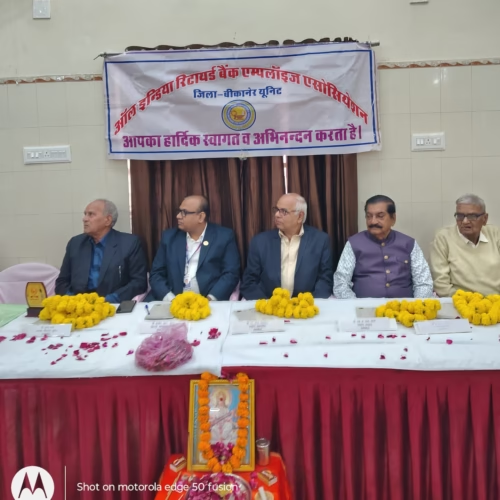
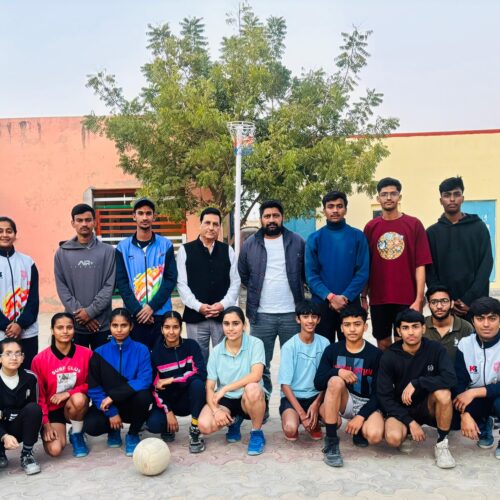
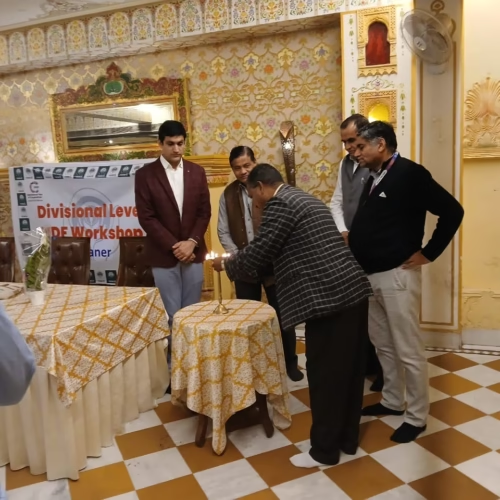
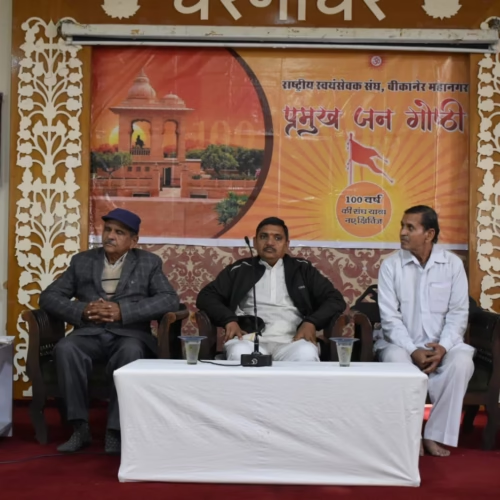



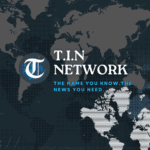







Add Comment